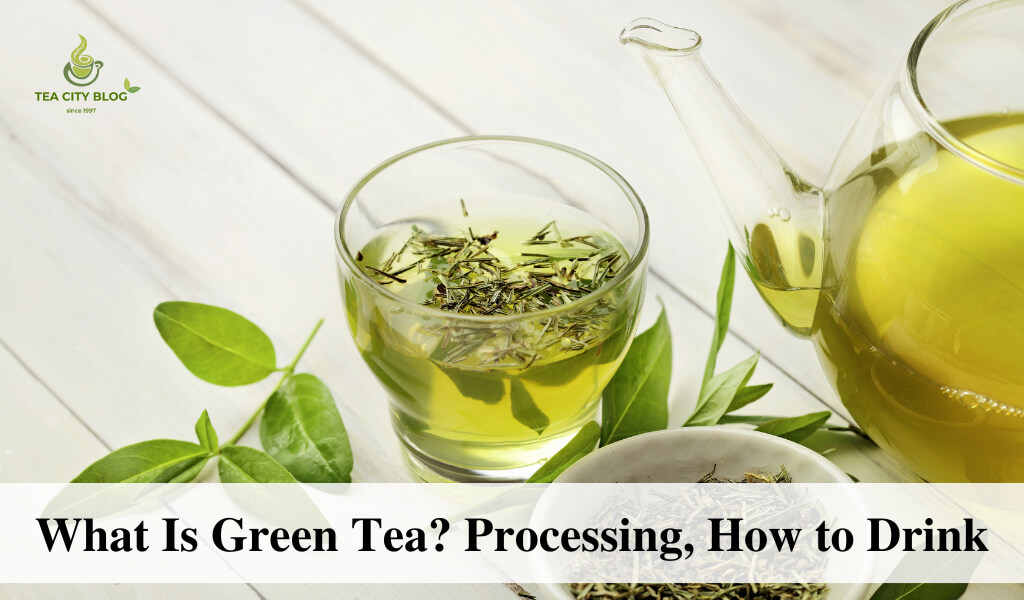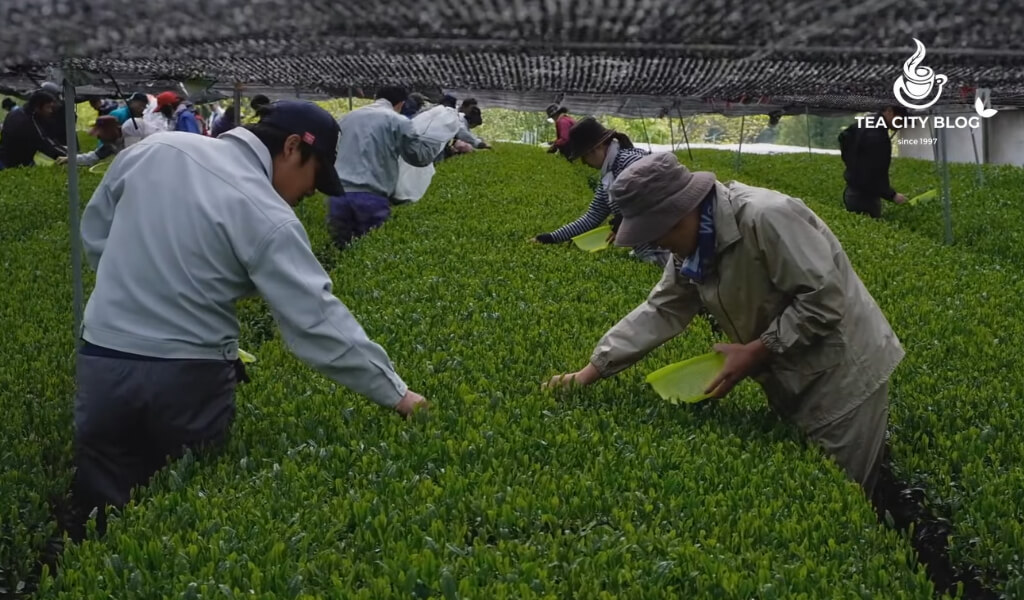Green tea – it’s considered a “true tea” because it’s made from the leaves of the tea plant. You can find it being grown in China and Japan, where it’s hugely popular.
Recently, it’s become famous worldwide for its possible health benefits. There are various kinds of Green Tea, like dragon well, gunpowder, matcha, and sencha.
But what exactly is green tea, and why is it so special? Join me as we explore this beloved drink’s origins, benefits, and cultural significance.
Quotes of tea at Today
“I am so fond of tea that I could write a whole dissertation on its virtues. It comforts and enlivens without the risks attendant on spirituous liquors. Gentle herb! Let the florid grape yield to thee. Thy soft influence is a more safe inspirer of social joy.”
― James Boswell, London Journal, 1762 – 1763
What is Green Tea?
Green tea is made from the leaves and buds of Camellia Sinensis. Unlike Oolong and Black teas, they are not subjected to the same withering and oxidation process. There are many different types of Green tea available. The taste of tea can differ greatly depending on factors such as the specific Camellia sinensis plant used, how it’s grown, production methods, and harvest timing.
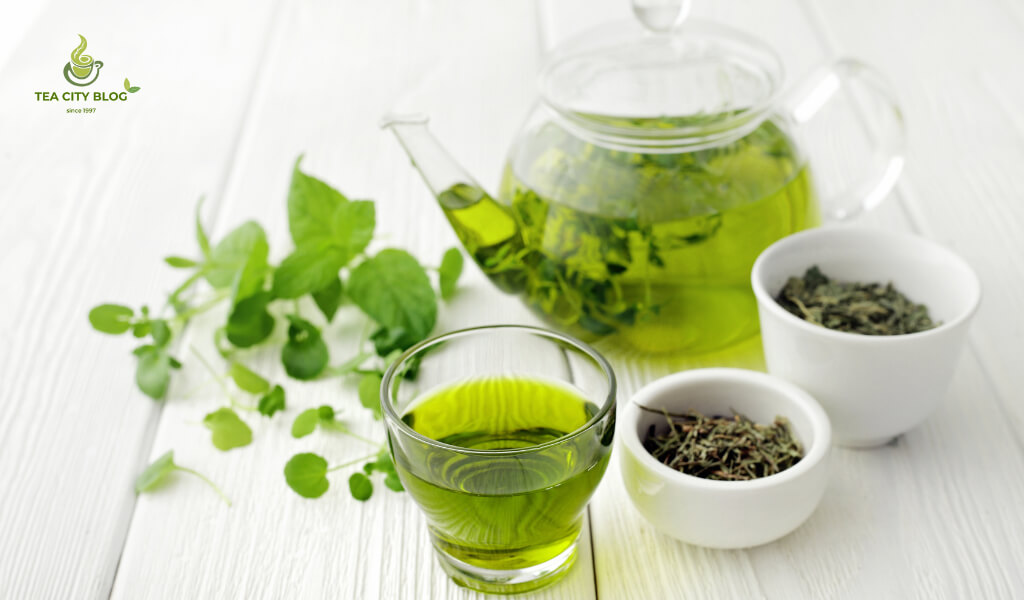
Did you know it’s an evergreen shrub originally from the southwest forest region of China? Specifically, Green Tea and hydration are made from the Chinese tea plant called Camellia sinensis sinensis. High-altitude and cool temperatures give this plant a soft, sweet flavor distinct from Camellia sinensis assamica, used for Black teas.
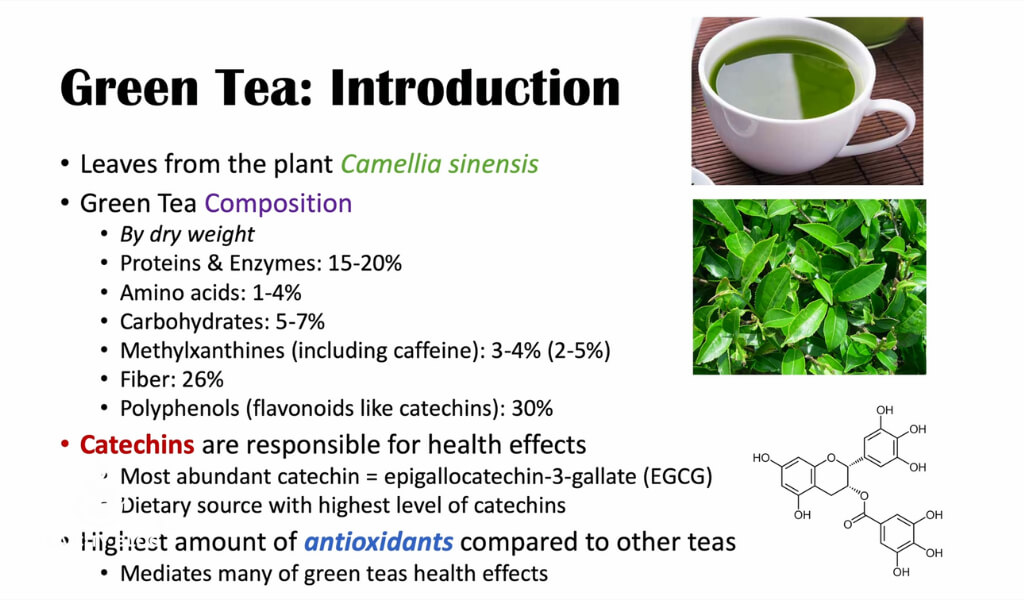
Japan and China dominate Green Tea production. Interestingly, all tea leaves, including green ones, are harvested by hand. But with Green Tea, the leaves are immediately preserved with heat after harvest, while black tea leaves are left to oxidize before they’re dried. In Japan, Green Tea with sustainability is dried with steam, while in Chinese culture, Green teas are processed with dry heat using an oven-like drum or wok-like vessel.
Most Green Tea comprises tea leaves alone, but some Japanese culture types use only stems or combine them with the leaves. Different Green Tea types are available, each processed differently and offering a unique taste.
Generally, Green Tea has a softer and sweeter taste than black tea. Japanese Green Teas are known for their strong vegetal flavour, grassy and reminiscent of seaweed, with citrus notes.
On the other hand, Chinese Green Teas tend to have a mellow vegetal flavor with more sweetness and nutty, floral, woody, and vanilla notes.
Why is Green Tea called Green Tea?
A properly brewed green tea exhibits diverse colors, including green, yellow, or light brown. When brewed correctly, green tea appears light in color and has a subtle astringency. The resulting liquor is clear green if you infuse fresh green tea leaves. “Green” refers to the color of the liquor as a result of brewing green tea. If the tea leaves are too old, it will result in a more yellowish liquor.
An interesting fact is what people call in the West “Black Tea” is actually known as “Red Tea”. This is because Chinese people only brew loose leaves resulting in a red liquor, while Westerners brew teabags resulting in a dark color of Green Tea, closer to “Black”.
A Guide to Green Tea plant varieties
As far as I know, there are two main tea plants, Camellia sinensis, which are used to produce the tea we drink.
Camellia sinensis
This tea plant is originally from China and has smaller leaves than other varieties. It’s often utilized to produce green and White teas.

This tea plant thrives as a bush in sunny, cooler, and drier mountainous regions. Additionally, it has a solid ability to withstand low temperatures.
Camellia sinensis assamica
This type has larger leaves and was initially found in the Assam region of India. It is commonly utilized to make robust black tea and thrives in warm and humid conditions, particularly in sub-tropical forests.
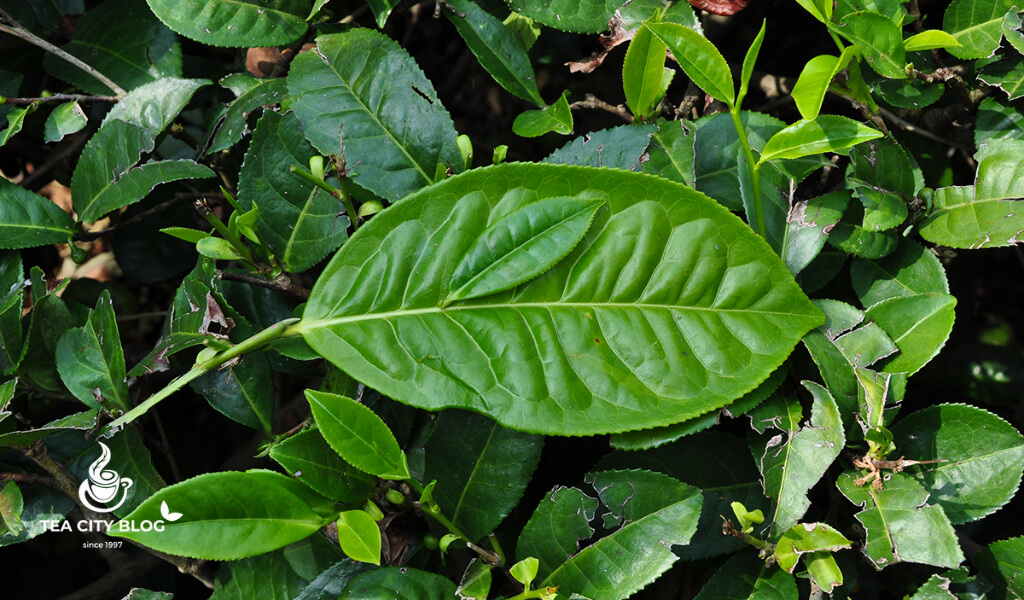
Over time, hundreds of cultivars and hybrid plants have been developed from the Camellia sinensis plant varieties. However, it is technically possible to create any tea from the leaves of any Camellia sinensis plant.
Explore popular tea varieties with us:
- What is pu-erh tea? Origin, History, Uses & Flavors
- What is Oolong Tea? Understanding its Origins, Flavors, and Varieties
Green Tea vs. Other Teas: How They Differ
Green tea vs black tea or others share a few distinctive traits that are almost universal:
- Firstly, Green Teas are characterized by their greenish-yellow leaf appearance. They typically produce a light-bodied, mildly astringent, and vegetal/grassy-flavored cup when brewed.
- Secondly, if steeped at too high of a temperature or too long, Green Teas can have a bitter taste and unpleasant astringency (more so than other tea types). For this reason, Green Teas are often steeped at lower temperatures and shorter durations. However, some varieties are less delicate and withstand hotter temperatures and longer steeping times.
- Lastly, Green Teas age less than other types of tea and are generally best consumed within 12 months of production. After this time, the tea may lose some of its original characteristics, but it is still safe to drink.
Uses
Green tea is an excellent choice during the day because it has caffeine. It’s a delicious beverage you can enjoy before, during, or after meals. Interestingly, it may also aid in digestion.
Green tea has a lot of great benefits! Here are just a few:
- It’s packed with polyphenols which help protect your body from diseases.
- It contains natural stimulants like caffeine, which can improve brain function.
- Drinking Green Tea may also help speed up your metabolism.
- It can have a positive effect on controlling blood sugar levels.
- And best of all, regular Green Tea consumption may help reduce your risk of heart disease.
Some benefits of Green tea include weight loss, cancer prevention, heart health, skin health, mental health, and antioxidants.
A Journey through Green Tea Processing
Green Tea Processing: Steaming/Roasting → Cooling → 1st Rolling → 1st Drying (110°C/70°C) → Final Rolling → Final Drying (120°C/80°C)
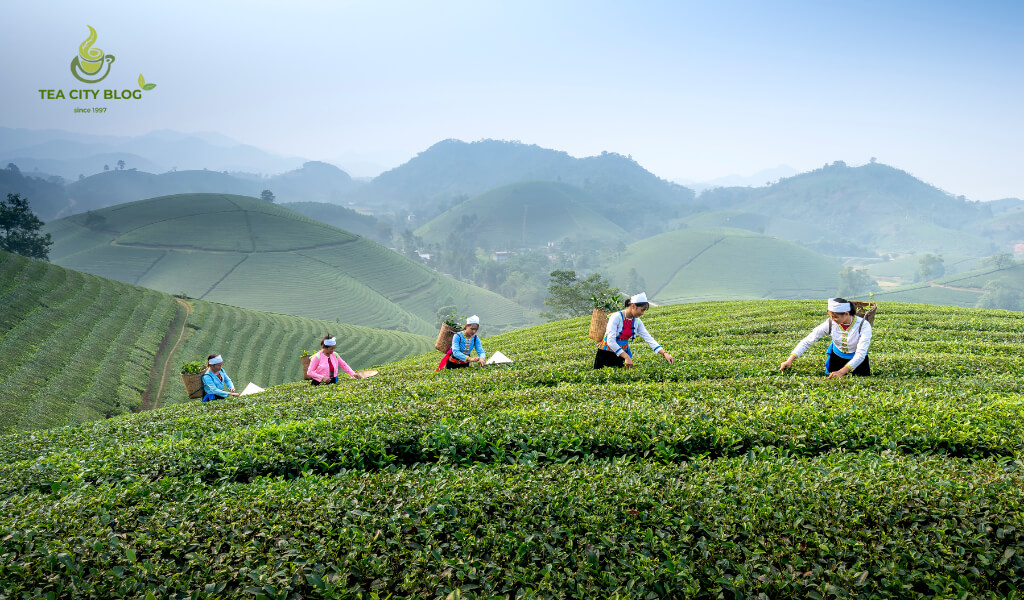
When it comes to Green Tea, I learned that the tea leaves are plucked from the Camellia sinensis plant and then quickly heated through either pan-firing or steaming farming. This is to dry the leaves and prevent too much oxidation from occurring, altering their fresh-picked flavor and turning the leaves brown.
Once brewed, Green Tea can have a color ranging from green to yellow to light brown, and the taste can vary from grass-like and toasted (pan-fired) to vegetal, sweet, and seaweed-like (steamed). Green tea should have a light color and mild astringency if brewed correctly.
In contrast, Black tea leaves are harvested and allowed to oxidize before being heat-processed and dried thoroughly. During oxidation, oxygen interacts with the tea plant’s cell walls, turning the leaves from a rich dark brown to a black color and significantly altering their flavor profile.
Based on its processing, brewed Black tea can have different colors and flavors, ranging from amber to dark brown and malty to fruity to roasted.
We pass the leaves through a steaming treatment to make our Green Tea before rolling them into shape.
The steaming process applies light heat to the leaves, which helps stop the oxidation process and exposes the fresh, grassy flavor of the leaf. Green Tea leaves cannot oxidize after rolling, so they remain light in color and flavor.
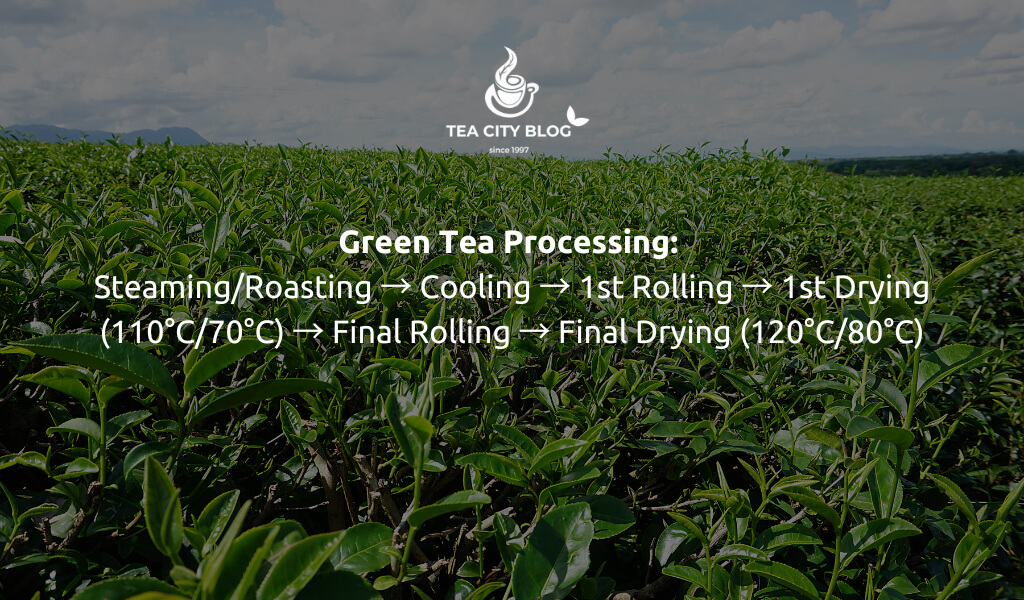
Exploring the Roots: The Origins of Green Tea
The Camellia sinensis plant species is the source of all Green Tea. Still, it’s grown and produced in various regions worldwide, such as China, Japan, India, Sri Lanka, Taiwan, Bangladesh, New Zealand, Hawaii, and South Carolina.
Green tea originated in China, and the word “tea” there specifically means Green Tea. China’s Yunnan province is where the Camellia sinensis plant species producing tea was born.
Yunnan is home to over 260 of the world’s 380+ tea varieties, making it a tea lover’s paradise.
There’s a popular legend that Emperor Shennong, who’s also believed to have invented Chinese medicine, discovered tea as a beverage in 2737 BC when fresh tea leaves from a nearby tree fell into his cup of boiled water.
The Buddhist monks grew, harvested, and produced tea as their Catholic counterparts did with grapes and wine in European monasteries. The monks drank tea for physical refreshment, meditation, and as a substitute for alcohol. This practice became a spiritual and social tradition that spread throughout China.
Green tea was popularized in Japan in 1190 by Eisai, a Zen priest who studied and visited China’s Buddhist monasteries and temples. He took tea plant seeds and bushes from China to Japan and taught fellow Buddhist monks how to produce and consume tea, promoting it as a contemplative practice.
Eventually, the custom of tea drinking spread throughout Japan. Even today, China and Japan are the world’s top two producers and exporters of Green Tea.
Sipping the Best: Popular Types of Green Tea to Try
There are various types of Green Tea, and each kind has its unique taste profile.
Japanese Green Teas
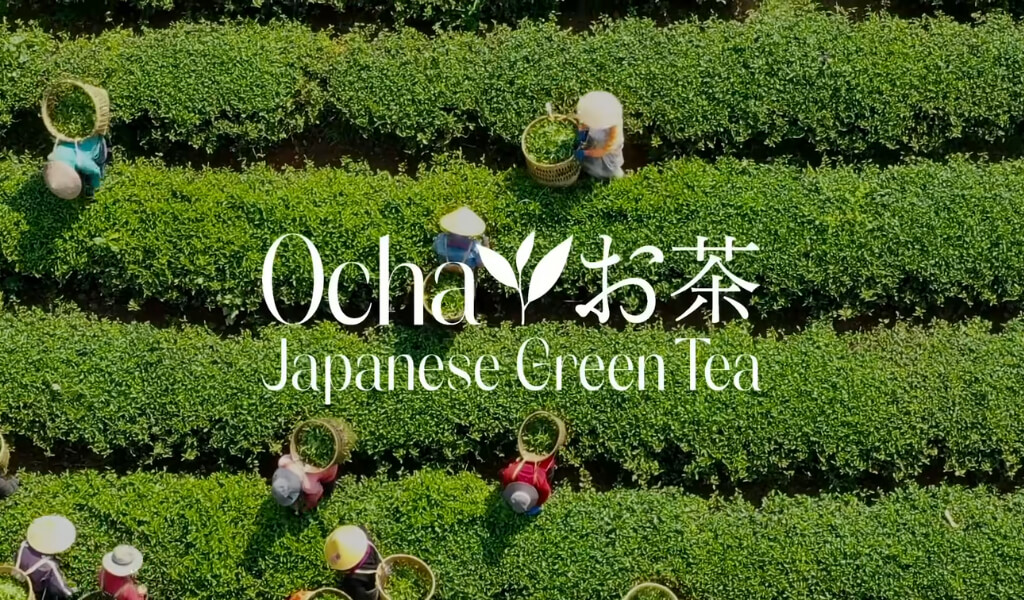
- Matcha: This type of tea, known as Japanese powdered tea, has a bitter and sweet taste.
- Jasmine Tea: As someone who enjoys flavored teas, I particularly love the gentle sweetness that jasmine flowers infuse into Green Tea, making it a favorite among tea blends.
- Sencha: This Green Tea is a beloved favorite in Japan, boasting a flavor reminiscent of fresh vegetables and grass.
- Gyokuro: I love this Japanese Green Tea grown in the shade – it lets the umami flavor shine through beautifully.
- Genmaicha: This type of tea blend from Japan contains puffed rice and has a delicious, toasted, and vegetable-like flavor with a hint of sweetness.
- Houjicha: This type of Japanese Green Tea is unique because it is roasted using charcoal in a porcelain pot, setting it apart from other varieties.
- Bancha: This tea is gathered during the second harvest of sencha between the summer and autumn seasons.
Chineses Green Tea
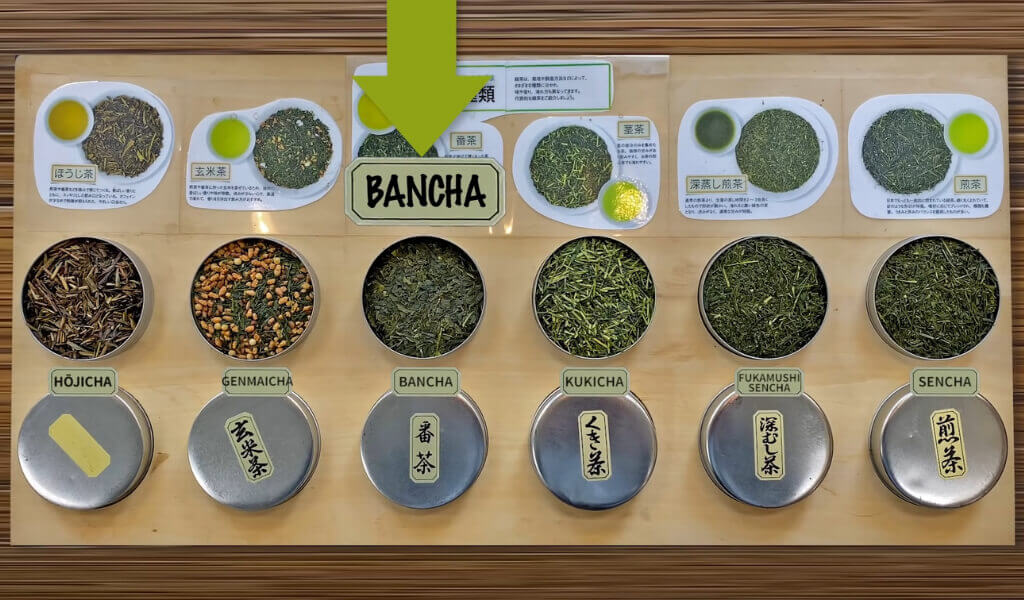
Did you know that Green Tea from China is the most ancient form of tea, stretching back thousands of years? Even now, it remains one of the most popular teas!
- Dragon Well Tea: This Chinese tea is quite popular in the United States, and it boasts a subtle and sweet flavor with hints of chestnut.
- Biluochun: Biluochun tea gets its name from its spring harvest and its distinctive appearance. Its leaves are tightly rolled into a spiral resembling snail meat, hence the name “green snail spring. So, when you see the name Biluochun, you can picture a springtime snail rolled up in a cup!
- Lu’An Melon Seed: Lu An Gua Pian is a tea from Lu’An in Anhui Province. The tea leaves are processed in a way that gives them a distinct melon seed shape when brewed, hence the name ‘Melon Seed.’ So, this tea is named after its place of origin and the shape of its leaves.
- Lu Mt. Cloud Mist Tea: The Lu Shan Yun Wu Green Tea, also known as “Clouds & Mist,” boasts dark green leaves with a hint of grey. These leaves are delicately curled into beautiful spirals that showcase a dark jade color.
- Gunpowder Tea: Have you tried Chinese pellet tea? It’s made by compressing dried leaves into little balls and usually has a mild, grassy taste.
A Taste of Serenity: What Does Green Tea Taste Like?
As I’ve shown you, Green Tea can originate from various regions worldwide and be prepared differently. Therefore, the taste of the Green Tea you brew depends on multiple factors, such as its place of origin, processing method, and even brewing technique.
Nevertheless, some shared characteristics describe the overall flavour profile of Green Tea. These include earthy, grassy, vegetal, sweet, buttery, nutty, toasty, seaweed-like, broth-y, lush, green, and herbaceous.`
From Shelf to Cup: Buying and Storing Green Tea for Maximum Flavor
I’ve learned that while tea won’t go “bad”, it can become stale and lose its pleasant taste. If someone claims they don’t like Green Tea, it’s likely because they’ve sipped on worn or low-quality tea.
I buy my Green Tea from a reputable company that provides information on its processing and packaging to ensure its quality. I also ask the tea seller for directions on brewing the best cup of that particular variety of tea.
Since Green Tea is less oxidized than black tea, it’s technically fresher and more delicate, so it should be consumed sooner for maximum flavor.
I prefer to drink Green Tea within six months to a year of purchase. I store it in a cool, dark place, away from light, oxygen, moisture, and strong-smelling pantry companions like coffee or spices.
I want to share some tips for storing tea properly to help you preserve its flavor and extend its shelf life. I steer clear of heat, moisture, light, and strong scents to keep tea at its peak.
For Green Tea, an opaque and airtight home is the way to go – it’ll stay fresh and won’t lose its glow. And once I crack open a pack, I sip it up within months – no need to hold back; the flavor’s worth the hunt!
Savoring the Experience
When I drink Green Tea, I don’t need to add cream, sugar, or anything else to enjoy it. Adding these things might reduce the health benefits of the tea. If I want to add some extra flavor to certain types of Green Tea, I like to squeeze a bit of lemon juice into it.
I usually use water between 150 and 180 F to brew Green Tea. The brewing times vary depending on the type of tea, but they’re generally short. Steamed Japanese Green Teas only need to be brewed for about 30 seconds, while others might require up to four minutes.
Suppose I brew Green Tea for too long. It can become bitter in that case, so I always follow the recommended time and temperature for the specific tea I’m brewing.
For an antioxidant boost, drink a cup of Green Tea in the morning, approximately 1-2 hours after breakfast, or in the afternoon, about 1-2 hours after lunch. I recommend drinking your Green Tea during these times to reap the most health advantages.
Is drinking cold Green Tea okay?
Yes! Green tea is just as safe cold as it is hot.
It is also delicious and refreshing on a hot day. Longjing, for example, is wonderful, steeped hot or cold.
Add 3–4g of tea to a 500ml thermos of cold water and steep overnight in the fridge. It’s ready for you in the morning and a great way to start the day in hot weather.
Stimulating or Depressing? The Effects of Green Tea Unveiled
Well, it acts as a mild stimulant. However, it’s important to note that if you’re using other stimulants, you should avoid consuming Green Tea as it may alter the effects of other medications.
Is there any harmful effect of green tea?
Green tea needs to be more understood in India. Many people have tried to brew and drink green tea only to spit it out in disgust due to its bitter, unpalatable taste. Well! brewing green tea is an art in itself.
To get that perfect cup of Green Tea, you need the following:
- Whole green tea leaves are called TGFOP in technical terms.
- Spring or mineral water or plain filtered water at 80 degrees centigrade. Just take the kettle off the stove/gas when the water boils. Keep it aside for 2–3 minutes, and the temperature will drop to around 80 degrees Celsius.
- A teapot or vessel with a lid for brewing the tea.
- First, let the water boil, then keep it aside for 2–3 minutes to cool to 80 degrees Celsius. Then take a pinch of green tea leaves and place in the teapot.
- Add the hot water to the teapot, put on the lid, and let brew for a few minutes. The tea leaves will brew and impart a lovely greenish-yellow color to the tea. The tea is now ready to be poured out into cups for drinking.
- Pour the brewed tea from the teapot into the cups or glasses and sip slowly. You can add a teaspoon of pure honey or a little brown sugar to the tea if you want to sweeten the tea. Otherwise, it is good enough to be drunk just as it is without adding any sugar or milk. Enjoy!
If green tea is prepared and drunk in this manner, it will not cause any harm. Rather it will improve one’s digestion and health.
Overstepping or using too many tea leaves will ruin the delicate flavor. So, watch the amount and brewing time for a perfect cup.
Is Japanese green tea better than Chinese green tea?
The Japanese do the studies, so whose tea would they say is better?
It’s like how the USA says it has the best salmon while trashing other countries’ salmon.
Many Chinese inventions are said to be Japanese. I don’t believe the world is fair. On rare occasions, they will utter Korean or Vietnamese instead of Japanese. No surprise the Koreans continue to say that China does nothing except emulate South Korea.
BTW, Hong Kongers live longer than the Japanese.
Westerners are using the longer life expectancy of the Japanese to back up Japan’s claim that Japanese tea is better. However, Hong Kongers live longer than the Japanese. (And note Macao, too, is a Chinese country just a little behind.)
Conclusion
Indulge in green tea’s delightful and healthy goodness – a beverage with a rich cultural legacy. It’s the ultimate brain booster, cancer and heart disease fighter, and weight loss, supporter.
With so many varieties and flavors, there is a green tea for everyone. Thank you for taking the time to read this article, and I hope you found it informative and enjoyable.
If you found this article helpful, please share it with your friends and family to help spread the word about the wonders of green tea.
I’m Shanna, creator of Spiritea Drinks. I’m all about teaching people to grow their own food, tea, cook what they harvest, and eat with the seasons.

